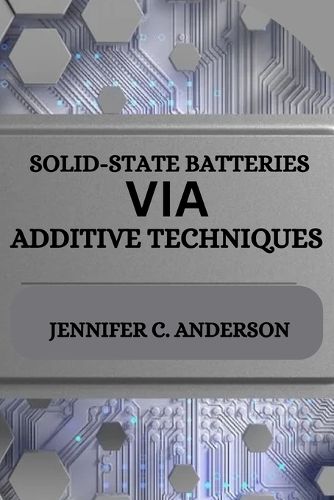Readings Newsletter
Become a Readings Member to make your shopping experience even easier.
Sign in or sign up for free!
You’re not far away from qualifying for FREE standard shipping within Australia
You’ve qualified for FREE standard shipping within Australia
The cart is loading…






This title is printed to order. This book may have been self-published. If so, we cannot guarantee the quality of the content. In the main most books will have gone through the editing process however some may not. We therefore suggest that you be aware of this before ordering this book. If in doubt check either the author or publisher’s details as we are unable to accept any returns unless they are faulty. Please contact us if you have any questions.
dvances in additive manufacturing (AM) processes are continuously opening up the material design space, providing scientists with opportunities to explore the relationship between structure, processing, and materials properties in new contexts. The first project presented in this book presents the design and refinement of a novel, polyborane-based solid electrolyte, whose design and investigation were motivated by the advent of additively manufactured, 3D electrodes, which could play a pivotal role in enabling next-generation batteries that can store more energy without sacrificing power. The first iteration of this electrolyte was synthesized by hydroborating polybutadiene with 9-borabicyclo(3.3.1)nonane (9-BBN). The resultant poly(9-BBN) was then reacted with precise amounts of n-butyllithium (n-BuLi), an organolithium reagent, to create the final polymer electrolyte. The polymer electrolyte films were assembled into a custom apparatus for impedance measurements, and though found to be ionically conductive, these measurements were not consistent, even within films made from the same batch of polymer in solution.
$9.00 standard shipping within Australia
FREE standard shipping within Australia for orders over $100.00
Express & International shipping calculated at checkout
This title is printed to order. This book may have been self-published. If so, we cannot guarantee the quality of the content. In the main most books will have gone through the editing process however some may not. We therefore suggest that you be aware of this before ordering this book. If in doubt check either the author or publisher’s details as we are unable to accept any returns unless they are faulty. Please contact us if you have any questions.
dvances in additive manufacturing (AM) processes are continuously opening up the material design space, providing scientists with opportunities to explore the relationship between structure, processing, and materials properties in new contexts. The first project presented in this book presents the design and refinement of a novel, polyborane-based solid electrolyte, whose design and investigation were motivated by the advent of additively manufactured, 3D electrodes, which could play a pivotal role in enabling next-generation batteries that can store more energy without sacrificing power. The first iteration of this electrolyte was synthesized by hydroborating polybutadiene with 9-borabicyclo(3.3.1)nonane (9-BBN). The resultant poly(9-BBN) was then reacted with precise amounts of n-butyllithium (n-BuLi), an organolithium reagent, to create the final polymer electrolyte. The polymer electrolyte films were assembled into a custom apparatus for impedance measurements, and though found to be ionically conductive, these measurements were not consistent, even within films made from the same batch of polymer in solution.